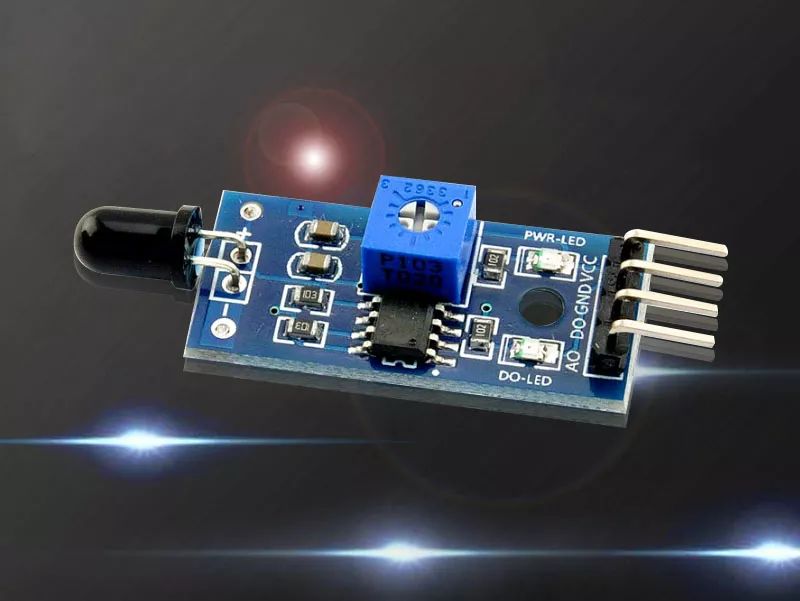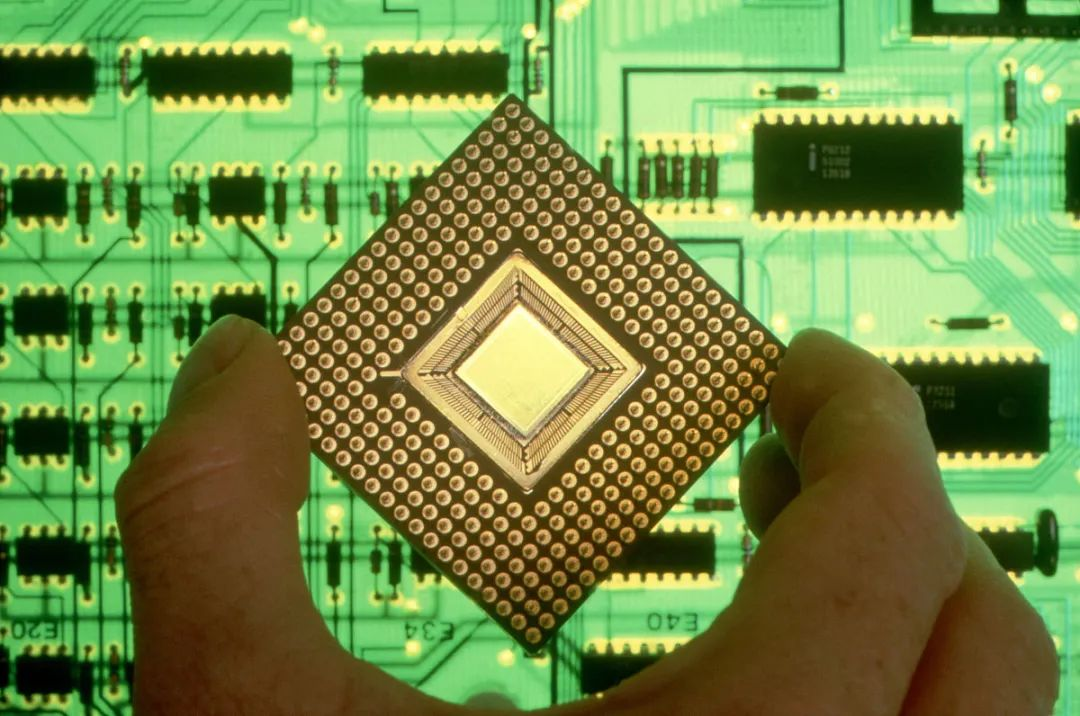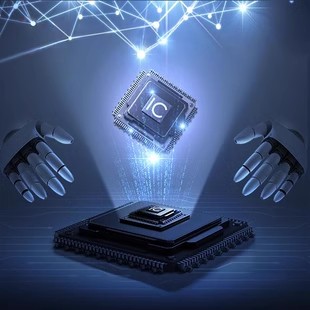Q: How do you think of the overall performance of the electronic sector this year and the recent trend of the electronic sector?
A: From the perspective of the industry index, from January 3, 2023 to the present, the electronic sector has risen by about 8.1 percentage points, ranking fifth in the industry.
In the interior of the electronic sector, the optical sector increased by about 16%, the electronic manufacturing sector was about 13%, and the passive devices and PCB increased by about 4%.
However, the battery and integrated circuit fields in the semiconductor field have fallen by about 4.5%.
On the whole, from the beginning of the year to the present, the semiconductor field has fallen by 4-5 percentage points.
In contrast, optics, optoelectronics, and electronic manufacturing and PCB have shown a rise.
The reason why the electronic sector caught up in the second half of the year is the expansion of the industrial chain. For example, the PCB light module extends to the three types of chips and advanced packaging fields, and a significant increase in the second half of the year.
The Huawei Industry Chain is also a hot spot for the continuous attention of the market, and it is expected to continue to pay attention to the future including this year.
Q: What is the impact of Huawei Industrial Chain? In particular, the sales of new energy vehicles and market responses of Huawei M7 series of new energy vehicles?
A: The market attention caused by Huawei's industrial chain has been significantly improved since August, especially for the incremental effect of operating the industrial chain, such as satellite communication and innovative technology, which brings incremental instead of survival competition.
Due to the innovation of product innovation, Huawei's electronic sector, such as the M7 car series, continues to exceed the sales of market expectations, including M9, which is expected to receive attention in December, and optical innovation are all market hotspots.The Huawei Automobile Series, especially M7, has obtained more than 50,000 orders in less than a month. This is a very prominent performance in the industry, and it is even comparable to the sales of new domestic car car building forces.
Huawei's success part is attributed to its ability in technological innovation, including the introduction of the smart driving system ATS2.0, and the intelligent cockpit and software and hardware ecosystem built based on Hongmeng OS.
These factors have made Huawei's technical and brand advantages in the new energy vehicle industry outstanding, providing development direction for other car manufacturers, and driving the progress of the entire industry.
Q: How does Huawei's newly released mobile phones affect the global smartphone competition pattern?
A: The influence of Huawei Mate60 on the global competition pattern of smartphones is that its update rhythm has forced other manufacturers to speed up their own updates.Taking Xiaomi 14 mobile phones as an example, its release response is good, and sales may reach 1 million within a week.Other Android manufacturers are also gradually following the release of Huawei's release, and the overall market performed well.Huawei's new products have not only made innovation in the use of AL chip, but also improved the vitality and competitiveness of the entire electronic sector by continuously promoting the integration of software and hardware.
Q: During the decline of Huawei mobile phone performance, what mobile phone brands have benefited from domestic and foreign mobile phone brands? Will Huawei continue to invest in the mobile phone industry next?
A: Since the influence of the US policy in 2019, Huawei Mobile has continued to decline due to the influence of the US policy, from 240 million units at its peak to about 40 million.
In this process, domestic brands such as Apple, OPPO, Xiaomi have different degrees of benefits, especially the benefits of Apple and Honor are more obvious.
In terms of foreign markets, Samsung and Xiaomi are the main beneficiaries.
Nevertheless, Huawei's focus is on the high -end mobile phone market, especially the high -end product line with Mate and P series as its core.
Although in the foreign market, due to the issue of GMS authorization, there may not be significantly increased in the short term, but the return of Huawei, especially in the high -end market, also caused a relatively large impact on brands such as Apple and Honor, and alsoIt will affect other brands such as Xiaomi, OPPO and vivo.
Q: What are the opportunities and challenges of the Huawei Mate60 series to the domestic semiconductor industry chain?
A: The influence of the Huawei Mate60 series is mainly reflected in three aspects: first, the promotion of domesticization.Since 2019, Huawei has continued to promote the domesticization process in the United States, especially in the localization of the main control chip SoC.This shows that the process of domesticization will not stagnate, and it will continue to iterate in the future.
Second, for the return of the high -end mobile phone market, if Huawei's high -end mobile phone shipments can increase from less than 10 million to 30 million to 40 million, this will bring huge opportunities to the supply chain, especially to enter the high value.The corresponding profit space and market space will be greater.
Third, the incremental opportunity brought by Huawei, such as the addition of satellite communication innovation functions, may make consumers interested in new technologies and drive market demand. In the future, the entire smartphone market may also drive the entire smartphone market from stock competition to the incremental market.Slow down the shrinkage of the market.
Q: What are the opportunities and challenges of the Huawei Mate60 series to the domestic semiconductor industry chain?
A: The influence of the Huawei Mate60 series is mainly reflected in three aspects: first, the promotion of domesticization.Since 2019, Huawei has continued to promote the domesticization process in the United States, especially in the localization of the main control chip SoC.This shows that the process of domesticization will not stagnate, and it will continue to iterate in the future.
Second, for the return of the high -end mobile phone market, if Huawei's high -end mobile phone shipments can increase from less than 10 million to 30 million to 40 million, this will bring huge opportunities to the supply chain, especially to enter the high value.The corresponding profit space and market space will be greater.
Third, the incremental opportunity brought by Huawei, such as the addition of satellite communication innovation functions, may make consumers interested in new technologies and drive market demand. In the future, the entire smartphone market may also drive the entire smartphone market from stock competition to the incremental market.Slow down the shrinkage of the market.
Q: Please talk about your understanding of the development of semiconductor domesticization.
A: Semiconductor's localization wave rose after ZTE was sanctioned by the United States in 2018, and 2021 was an important turning point.That year, domestic domestic companies have made significant progress in the field of semiconductor design, especially in the fields of storage, radio frequency, CS, simulation chips and power semiconductors. Domestic enterprises have performed well in market share.
However, in the field of large chips, such as SOC and GPUs, the localization rate is relatively low.
In terms of semiconductor manufacturing, the global market share accounts for about 10 ~ 15%, and the trend will rise.
In the packaging testing session, China's global market share can reach 30%, while equipment materials are deep -water areas. Its localization is difficult. At present, the domestic production rate is generally 10 ~ 15%.Work hard.
In the next 3 to 5 years, the key points of localization are in the field of equipment materials and components.
Q: In terms of localization in the next few years, which areas do you think are the focus?
A: In the next 5 years, the focus of domesticization should be the field of large chip design, and at the same time focus on the breakthrough of advanced process technologies related to manufacturing.
Equipment, materials, and parts are equally important, especially because the United States restricts the exports of advanced process equipment and components after October 2021, which has promoted domestic efforts in these fields in China.
Q: In terms of investment in the electronic industry chain, what investment opportunities do you think?
A: First of all, consider the cycle of the industry.In August 2021, it entered the inventory cycle after the high point of the semiconductor sector, and then the chip price began to decline.But since the beginning of this year, loosening in various semiconductor links indicates a new round of upward trend.For example, the price of LCD panels began to increase, and the price of Stewra's screen also rose.There may be investment opportunities for continuous price increases next year. It is recommended to sort out the upstream and downstream of the industrial chain.
Q: What is the future investment outlook for the electronic industry chain, especially the semiconductor industry?
A: First of all, the semiconductor in the electronic industry chain is the key link of the entire industry.
Beginning in 2019, the major market in the semiconductor industry is mainly driven by 5G innovation. From the construction point of the network, it mainly speculates that the base station -related light modules and PCB are mainly hyped.Entering 2020, with the construction of 5G networks, the market's attention has shifted to terminal devices, such as 5G mobile phones. According to this logic, AL Innovation is expected to develop along similar models, focusing on network -level innovation and terminal product innovation.At present, the market has begun to pay attention to underlying network products represented by GPU chips, light modules, and PCB.
In the future, after the network investment, the focus of the market will shift more to the development of AL terminal products, such as the development of AL mobile phones or PCs.Because the supply chain manufacturer responds to the needs of terminal manufacturers based on AL functions, such as Qualcomm has launched AL -based SOCs, and companies such as vivo have launched AL mobile phones.This means that the market will continue to pay attention to and invest in these fields.
In addition, localization is also a major direction for market attention.
With the continuous development of domestic advanced assets, the direction of the corresponding equipment, materials, and components of advanced packaging may continue to attract market attention.
At the same time, midstream and downstream links such as assembly, raw material supply and structural parts are also worthy of attention.
Specifically, in the Huawei Industrial Chain, in addition to playing the role of the semiconductor industry chain, Huawei may also bring opportunities in the middle and lower reaches and software services fields. Especially Huawei launches mobile phones and other products based on Hongmeng OS.The corresponding Hongmeng version provides related software service providers with technical support and market opportunities.
Applications that need to be paid special attention include WeChat and Meituan.These terminal applications need to develop versions for Hongmeng OS, so it will have a significant driving effect on the entire industrial chain.
Q: What kind of understanding of the Huawei industry chain? Some people think that Huawei's industrial chain is not as good as Tesla and Apple. What do you think of this view?
A: Huawei is indeed different from Apple and Tesla in some aspects.
Although Huawei is a giant in the field of communication, it is not as leaders or inventors of the industry like Apple and Microsoft in the early days. Its role in the industry chain is not as large as Microsoft and Apple.This is affected by its profit margin and the bargaining ability of upstream suppliers.
Huawei's international market, especially overseas, has adopted more price competition strategies, which has led to the ability to pay upstream suppliers than Apple and Tesla.However, since the restrictions of the United States in 2019, Huawei has actively supported domestic suppliers. Even if some products have not reached the level of European and American manufacturers, Huawei has also taken the initiative to give downstream manufacturers a chance to try and error.Huawei's volume, upstream suppliers and contributions to domestic industries are worthy of recognition.
Moreover, looking forward to the future AL industry, Huawei has competitiveness in the field of cloud pipe AL. Its layout helps to reduce the risk of the industrial cycle and ensure that the company will not fall behind.
Q: What is the outlook on the semiconductor industry, especially the advanced packaging technology?
A: The difference between advanced packaging and traditional packaging is that it can achieve better performance, power consumption and size ratio, and adapt to higher density integration needs.
This is a key technology in the process of pursuing smallerized and high -performance equipment in the semiconductor industry.
In the future, with the deepening of the domestic trend, the development of advanced packaging in China is worthy of investor attention. This is not only a manifestation of technological progress, but also an important aspect of responding to the international situation and ensuring the security of the supply chain.
Q: What are the changes in the current packaging of the electronic industry chain in advanced packaging, and what is the reason behind it?
A: At present, the electronic industry chain attaches great importance to advanced packaging.This is mainly because on October 7 last year, the United States implemented a series of restrictions on my country's advanced manufacturing industry. Especially on October 17th, it implemented the implementation restrictions on domestic advanced manufacturing companies, and 13 strategic companies were included in the entity list.This makes it difficult for us to break through advanced manufacturing technology such as 5 nanometers or 3 nanometers. Therefore, a key way to improve chip performance is the advancement of packaging technology.
Q: What is the specific packaging technology, and what improvements can it bring in chip performance?
A: Advanced packaging technology can be analogized as a change in the same as the building from bungalows to multi -story buildings. The essence is to increase the three -dimensional space utilization rate of the chip.
For example, we can use 2.5D and 3D packaging technology, that is, to build a chip into a multi -layer structure, even if it is unchanged, it can significantly increase the performance of the chip.
In addition, it also includes heterogeneous integration, that is, a variety of different types of chips are encapsulated together, thereby improving integration and performance.
Advanced packaging has increased the packaging density and size, reached the communication connection between each layer of chips through interconnection technology, and solved the heat dissipation problem. This heat management is a new challenge.After mass production, the cost of advanced packaging may decline compared to the performance of traditional packaging units.
Q: What are the main areas of advanced packaging technology? Which types of chips need to use advanced packaging?
A: Advanced packaging technology is mainly used in areas with high requirements for chip performance, such as high performance computing, artificial intelligence and 5G communication.
Among them, large chips like SOC and GPUs especially need to use advanced advanced packaging technology to enhance performance.
In some areas, such as simulation radio frequency, advanced and advanced packaging may not require, because their requirements for chip performance are not so high.
Q: What are the important main lines of the first half of next year in the electronic industry chain investment?
A: The important main line of the investment in the electronic industry chain in the first half of next year includes three directions: innovation, security and cycle.
First of all, innovation mainly focuses on the opportunity of AL and applications on the terminal, such as 5G, AL chips and folding screen markets.We estimate that the shipping volume of folding screen mobile phones in China will reach 800 million to 10 million units next year.
In the future, we must also pay attention to the improvement of the penetration rate of innovative materials such as titanium alloy and OLED field.Secondly, the direction of security is mainly focused on localization, such as the localization of AL core equipment, including the replacement of limited chips, bringing new opportunities to domestic manufacturers.Third, we should pay attention to the price increase areas, such as the price increase of the LCD panel and the OLED screen, which directly reflects the improvement of the industry's prosperity and has a positive impact on the performance of listed companies.
Q: What specific directions should we pay attention to in the field of innovation, especially terminals and applications?
A: In the field of innovation, next year should focus on applications based on terminals.We expect that the folding screen market will still be an important growth point in the traditional mobile phone field.Other directions worthy of attention also include the application of OLED technology and the continuous improvement of its penetration rate, the use of titanium alloy materials, and innovative technologies such as 3D printing and microcomputers.
Q: What role will the domesticization play in the field of security investment?
A: domesticization is the core content of the field of security investment. Especially in the context of restrictions facing foreign manufacturers, domestic equipment, materials and components' localization provides huge market space.For example, the United States restricts exporting high -end GPU chips to China, which provides opportunities for domestic companies to develop and produce alternative products.Domestic listed companies will be likely to fill this vacancies and play an important role in it.
Q: What is the impact of price increases on the cycle industry?
A: The price of some categories in the industry has risen, such as LCD panels and OLED screens, usually the performance of the industry's prosperity.Such price increases usually directly thicken the performance of listed companies.When considering the investment in the cyclical industry, investors should focus on those areas in the rising price cycle because they may bring better returns in the medium period.
For more electronic conponents,please refer to:https://www.ciselec.com/en/products.html











